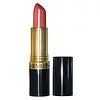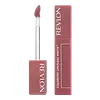What's inside
What's inside
 Key Ingredients
Key Ingredients

 Benefits
Benefits

 Concerns
Concerns

 Ingredients Side-by-side
Ingredients Side-by-side

Trioctyldodecyl Citrate
EmollientOzokerite
Emulsion StabilisingPolybutene
Ethylhexyl Palmitate
EmollientOctyldodecyl Neopentanoate
EmollientPentaerythrityl Tetraisostearate
EmollientC10-30 Cholesterol/Lanosterol Esters
EmulsifyingBis-Diglyceryl Polyacyladipate-2
EmollientCera Microcristallina
Emulsion StabilisingCaprylic/Capric/Stearic Triglyceride
Skin ConditioningBeeswax
Emulsion StabilisingSilica
AbrasiveSynthetic Wax
AbrasiveTocopheryl Acetate
AntioxidantAscorbyl Palmitate
AntioxidantAloe Barbadensis Leaf Extract
EmollientSerica
HumectantPentaerythrityl Tetraethylhexanoate
EmollientCaprylyl Glycol
Emollient1,2-Hexanediol
Skin ConditioningMica
Cosmetic ColorantCI 77891
Cosmetic ColorantIron Oxides
CI 17200
Cosmetic ColorantCI 19140
Cosmetic ColorantCI 15985
Cosmetic ColorantCI 42090
Cosmetic ColorantCI 15850
Cosmetic ColorantCI 45410
Cosmetic ColorantCI 77163
Cosmetic ColorantCI 75470
Cosmetic ColorantTrioctyldodecyl Citrate, Ozokerite, Polybutene, Ethylhexyl Palmitate, Octyldodecyl Neopentanoate, Pentaerythrityl Tetraisostearate, C10-30 Cholesterol/Lanosterol Esters, Bis-Diglyceryl Polyacyladipate-2, Cera Microcristallina, Caprylic/Capric/Stearic Triglyceride, Beeswax, Silica, Synthetic Wax, Tocopheryl Acetate, Ascorbyl Palmitate, Aloe Barbadensis Leaf Extract, Serica, Pentaerythrityl Tetraethylhexanoate, Caprylyl Glycol, 1,2-Hexanediol, Mica, CI 77891, Iron Oxides, CI 17200, CI 19140, CI 15985, CI 42090, CI 15850, CI 45410, CI 77163, CI 75470
Isododecane
EmollientTrimethylsiloxysilicate
EmollientDimethicone
EmollientPolyethylene
AbrasiveMica
Cosmetic ColorantAminopropyl Dimethicone
Disteardimonium Hectorite
StabilisingCitric Acid
BufferingDiisostearyl Malate
EmollientHelianthus Annuus Seed Wax
Skin ConditioningMaltodextrin
AbsorbentMethicone
EmollientPolyisobutene
Propylene Carbonate
SolventRicinus Communis Seed Oil
MaskingSodium Hyaluronate
HumectantVaccinium Macrocarpon Fruit Extract
AstringentParfum
MaskingBenzyl Benzoate
AntimicrobialLimonene
PerfumingLinalool
PerfumingBenzoic Acid
MaskingCI 77491
Cosmetic ColorantCI 77499
Cosmetic ColorantCI 45370
Cosmetic ColorantCI 45410
Cosmetic ColorantCI 17200
Cosmetic ColorantCI 15850
Cosmetic ColorantCI 77891
Cosmetic ColorantCI 19140
Cosmetic ColorantIsododecane, Trimethylsiloxysilicate, Dimethicone, Polyethylene, Mica, Aminopropyl Dimethicone, Disteardimonium Hectorite, Citric Acid, Diisostearyl Malate, Helianthus Annuus Seed Wax, Maltodextrin, Methicone, Polyisobutene, Propylene Carbonate, Ricinus Communis Seed Oil, Sodium Hyaluronate, Vaccinium Macrocarpon Fruit Extract, Parfum, Benzyl Benzoate, Limonene, Linalool, Benzoic Acid, CI 77491, CI 77499, CI 45370, CI 45410, CI 17200, CI 15850, CI 77891, CI 19140
 Reviews
Reviews

Ingredients Explained
These ingredients are found in both products.
Ingredients higher up in an ingredient list are typically present in a larger amount.
Ci 15850 is the pigment color red. It is an azo dye and created synthetically.
Azo dyes need to be thoroughly purified before use. This allows them to be more stable and longer-lasting.
This ingredient is common in foundations, lipsticks, and blushes. This color is described as brown/orangey red.
It has many secondary names such as Red 6 and Red 7. According to a manufacturer, Red 6 usually contains aluminum.
Learn more about CI 15850Ci 17200 is a synthetic reddish-purple dye.
CI 19140 is also known as Tartrazine. Tartrazine is a synthetic dye used in cosmetics, foods, and medicine to add a yellow color.
Tartrazine is created from petroleum and is water-soluble.
Some people may experience allergies from this dye, especially asthmatics and those with an aspirin intolerance.
Learn more about CI 19140CI 45410 is a synthetic red-pigment and dye.
It often goes by both Red 28 or Red 27; manufacturers label both ingredients as CI 45410.
This dye is commonly found in makeup because it imparts a vivid color. Some types of this dye change color based on pH level and interaction with moisture:
Your skin has a natural pH of around 4.5 - 5.5.
According to the FDA, CI 45410 is not permitted for use in eye products.
Red 27 is a flourescein dye and commonly used as a fluorescent tracer in medicine.
Learn more about CI 45410Ci 77891 is a white pigment from Titanium dioxide. It is naturally found in minerals such as rutile and ilmenite.
It's main function is to add a white color to cosmetics. It can also be mixed with other colors to create different shades.
Ci 77891 is commonly found in sunscreens due to its ability to block UV rays.
Learn more about CI 77891Mica is a naturally occurring mineral used to add shimmer and color in cosmetics. It can also help improve the texture of a product or give it an opaque, white/silver color.
Serecite is the name for very fine but ragged grains of mica.
This ingredient is often coated with metal oxides like titanium dioxide. Trace amounts of heavy metals may be found in mica, but these metals are not harmful in our personal products.
Mica has been used since prehistoric times throughout the world. Ancient Egyptian, Indian, Greek, Roman, Aztec, and Chinese civilizations have used mica.
Learn more about Mica